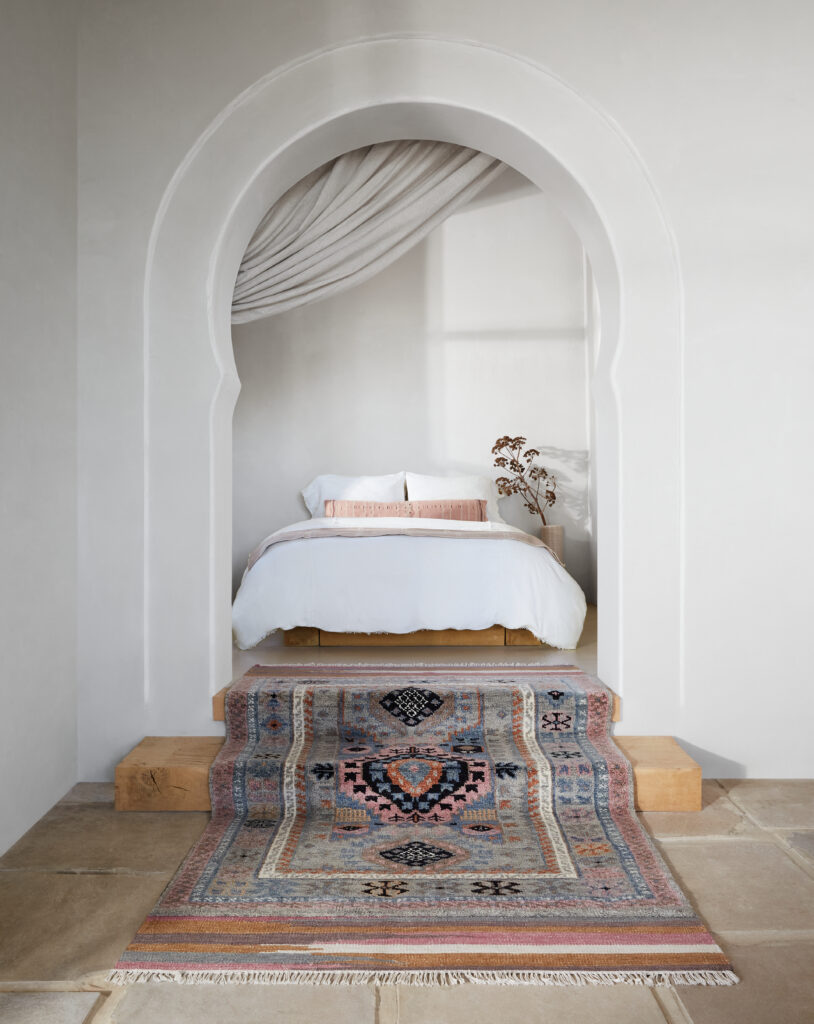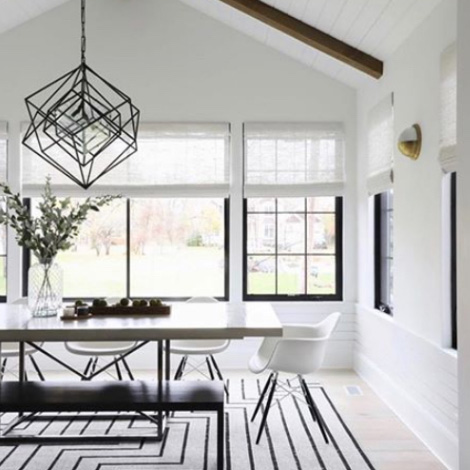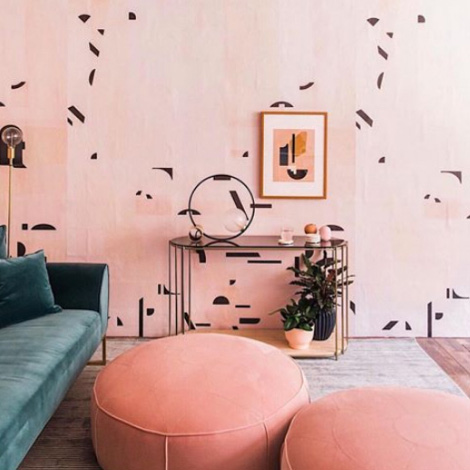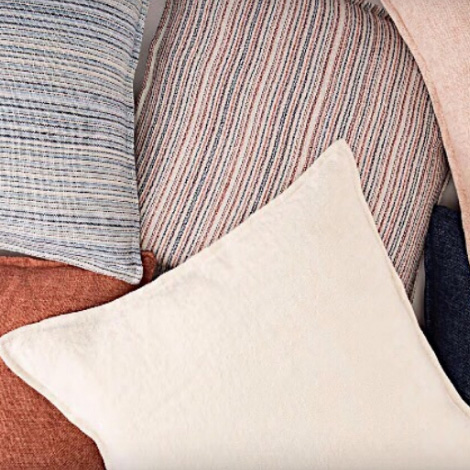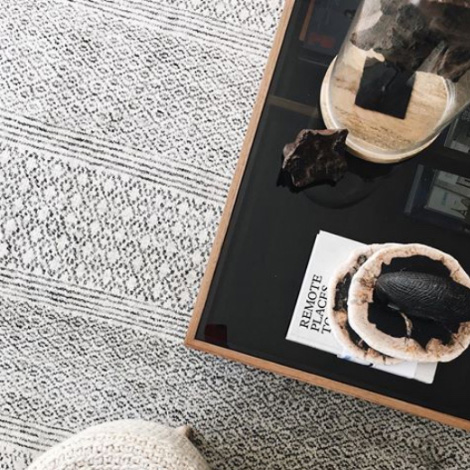Inspiration is everywhere—the archives of Vogue, global jaunts to far corners of the world, vintage rugs from the souks of Marrakech, the simplistic beauty of nature. But the design inspirations that resonate deepest are the ones steeped in history, rooted in generations of craft, and founded on a sense of place. Luxury begins where tradition comes alive. Here, Jaipur Living takes a walk through classic rug motifs that are grounded in the African, European, and Asian continents.
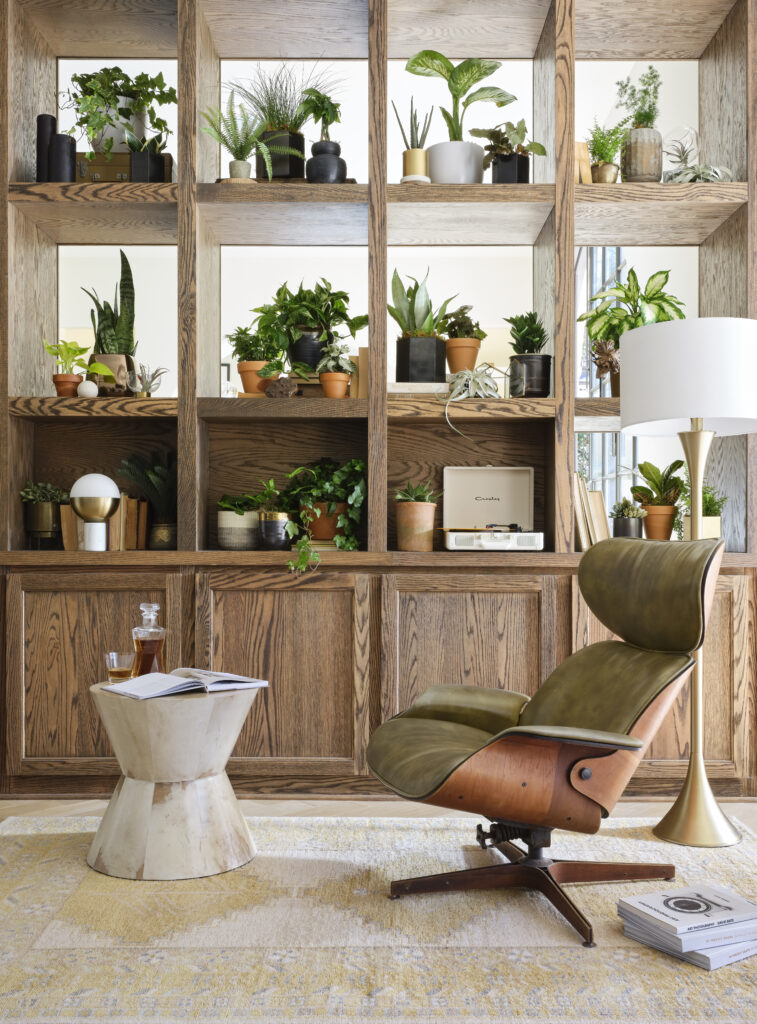
Jaipur Living‘s hand-knotted Gallant collection features a vintage-inspired medallion.
The Map of Luxury
Whether modern, contemporary, transitional, or traditional, rug designs, patterns, and styles pull from centuries of craftsmanship, with motifs engrained in cultural practices and identities. The beauty in interior design is bringing classic rug practices to homes around the globe—as textbook iterations of the original or as interpretations suited for the discerning eye of a modernist.
See also: Lifecycle Of An Artisan-Made Rug
The history of a place and its people are woven into the rugs lovingly handmade by the artisans who hope to share their story, their home, and their heart with the world at large. “As a child, I visited villages with my father—N.K. Chaudhary, founder of the Chaudhary Family of Brands—and saw how he interacted and respected their craftsmanship. This instilled an enduring respect for artisans, their handiwork, and the storytelling that goes into each rug they weave,” says Asha Chaudhary, CEO of Jaipur Living. “At Jaipur Living, our goal has always been to create beautiful lives and that starts with connecting weavers directly with interior designers, the design world, and, of course, celebrating their art.”

Part of the Designer Edit program, the Eden collection has a Persian motif.
Inside these pages, we invite you to explore not only our artisan-made, handcrafted rugs, but to also learn the history of the patterns and shapes that take form in our luxury collections. From the Old World motifs of Turkey, India, Morocco, and beyond to the New World stylings of contemporary, global, and abstract rugs—we’ll take you on a tour of traditional designs and their modern translations.
See also: 5 Inspirational Minutes With N.K. Chaudhary
“Jaipur Living rugs marry the centuries-old craft of hand-making rugs with modern, on-trend designs as dreamt by our immensely talented product development team and our artisans in India,” says Chaudhary. “It’s a stunning, seamless marriage.”
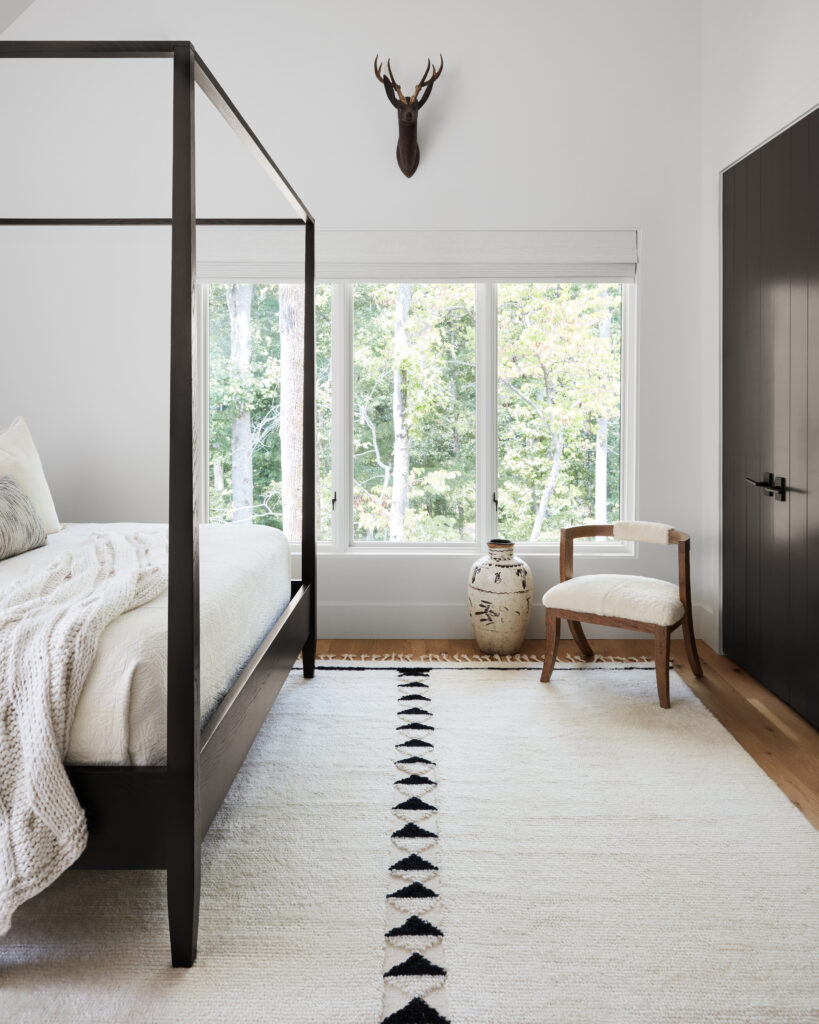
The Moroccan-inspired Desouk collection is made from 100% wool.
Deep Roots
Keeping the age old art of the handcraft alive, rugs that speak to Old World styles are steeped in centuries of weaving artistry. Patterns hailing from far corners of the world like Morocco, Turkey, Persia, and Asia echo the rich, winding histories of their places of origin. Founded in generations of cultural practices and woven from the stories of their ancestors, rugs that are handmade in celebration of old-world techniques and motifs breathe new life into tradition.
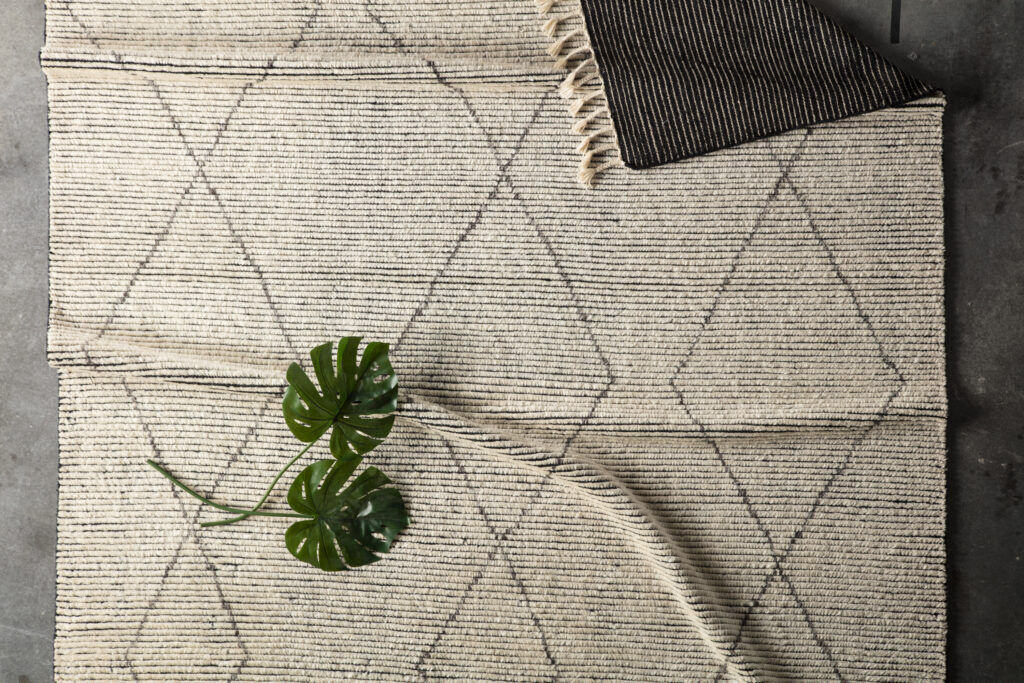
The bestselling Alpine collection was inspired by textiles from the Tullu region of Morocco.
African
Often looking to the rug-making practices of northern Africa—Morocco in particular—Jaipur Living has a breadth of collections that draw on the classic designs of the region. Encompassing Beni Ourain, Tullu, and Tuareg styles, among others, Moroccan rugs are typically woven with wool in natural shades of black, white, and cream, and tell the stories of their weavers, tribal ceremonies, and sacred symbolism. Many of these practices date to the Berber people of the Atlas Mountains, with the most recognizable motifs including asymmetrical geometric lines that trace the center of the rug like stained glass windows.

From Jaipur Living‘s Designer Edit program, the Amoret collection draw influence from Persian rugs.
Middle Eastern
Counting Islamic prayer, Afghani Chobi, Syrian Damask, and Persian rugs among their ranks, Middle Eastern carpets are as complex as the region’s vast history. Characterized by the namesake Persian knot, also known as the Senneh or asymmetric knot, Persian rugs house geometric figures and symbolic motifs that, according to ancient beliefs, protect the owner from harm and misfortune. These motifs include everyday objects, people, animals, and more, with regional differences being innumerable.

The Coredora collection pulls from Turkish designs.
Asian
Most known for the broadly categorized Oriental style, Asian rugs also count Khotan, Oushak, Kars, and Konya rugs, among others. Often spotted by variations of floral and geometric patterns and intricate details, Oriental rugs can include any that are crafted in the historically dubbed Orient. In particular, Turkish—or Anatolian—rugs are some of the first recorded. Made with the Ghiordes knot, also named the Turkish or symmetrical knot, these rugs date back millennia and span the complex histories of two continents: Europe and Asia. With influence from foreign traders, warring empires, the Ottomans, and so many more, Turkish rugs are extraordinarily varied. Arguably the most prominent, however, are Oushak rugs, which are recognizable for their scrolling vines, star-shape center medallions, and intricate, winding details.
European
From French Aubusson and Spanish Moorish to Scandinavian simplicity and Greek key detailing, rugs from Europe can be seen as a melding of ancient weaving practices and traditional motifs into styles all their own. As trade routes emerged so too did the exchange of ideas, histories, and products—including, of course, rugs. While European rugs have their own unique identity, you can also witness the influence of other areas of the globe—Oriental and Persian in particular. This sharing of designs also lead the way to the more modern, abstract interpretations of the New World, as discussed later in these pages.
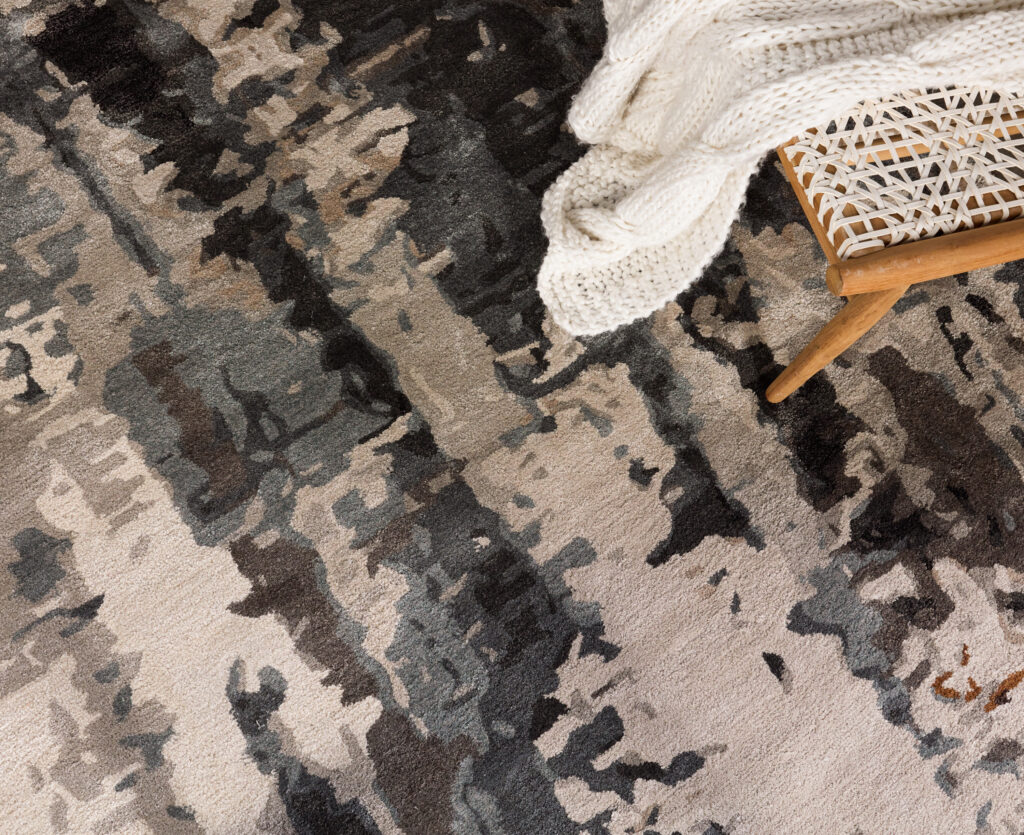
The Genesis collection highlights abstract design.
Lasting Influence
Combining time-honored craft with of-the-moment design DNA, New World rug styles are history lessons reinterpreted for today. While they are not, of course, relegated strictly to the Americas, New World patterns speak to a more modern vision, taking what is rooted in generational practices and traditions and translating it for consumers who prefer the edge of the 21st century—all while remaining grounded in classic weaving techniques.
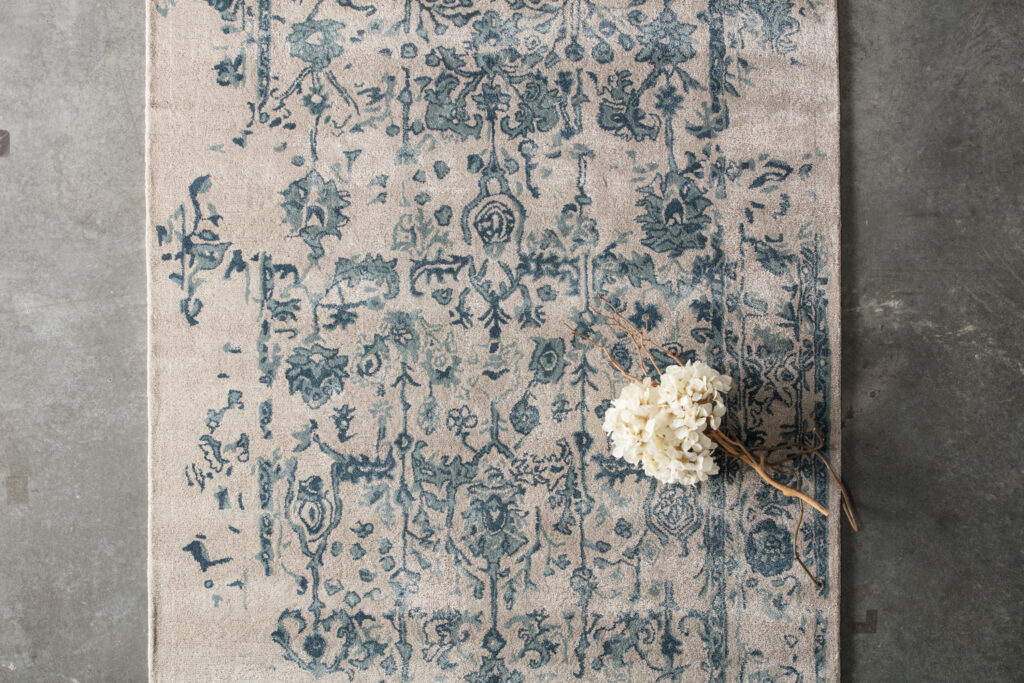
The hand-tufted Citrine collection from Jaipur Living is made from wool and rayon made from bamboo.
Popular styles range from modern and abstract to transitional and solids to designs with a sense of place, like Southwestern and global motifs, and trends, such as geometric and floral. But as with all rug patterns, the exact right choice is in the eye of the beholder—in this case the interior design client and homeowner extraordinaire.
See also: What’s Trending In Modern Design
The first rule of mastering so-called New World styles is that there are no rules. There can be overlaps in design genres—and there certainly will be—and there can be a wide range of looks and sentiments. While modern interiors can recall the austere with clean lines, simplistic colorways, and a pared down approach, that is not always the reality. Modern can also speak to slashes of color, glam finishes, and traditional remixes. Similarly, abstract rug patterns count painterly strokes and graphic swipes alongside kaleidoscopic geometrics and watercolor hues.

The indoor/outdoor Desert collection speaks to Southwestern style.
The influence of Old World motifs, naturally, is ever present within global-leaning styles, which often look to ancient and tribal inspirations. Southwestern designs, too, focus on the idea of place with warm, rich hues and patterns of significance founded in their namesake region.
Trends in interior design also have a home in New World rugs with geometrics—think tiles, shapes, and sharp, contrasting lines—and floral motifs making waves as of late. From literal interpretations to imaginative wisps of petals and stems, florals add touch of romance and femininity to a space.
See also: 6 Rugs That Celebrate Art Through Design
As with all of interior design, there are endless iterations of rugs designs—each tailored to its specific style need. Let the search for the perfect rug begin.



